By: Scott L. Robertson
My wife, Nicci, and I visited the southwest African country of Namibia and the Western Cape region of South Africa in October and November of 2002. This was our first trip to Africa, and though some of our family and friends were quite concerned when we announced our plans to rent a car and drive ourselves around both countries (on the wrong side of the road for North Americans and on rough and dusty dirt and gravel roads), we did our homework planning the trip and it turned out to be a fantastic success. Another first for me was traveling and shooting exclusively with a digital SLR. This article is intended to provide advice and information about traveling and photographing in this part of the world with a digital camera. You can also read a detailed, though not photography-centric, travelogue of our trip athttp://www.slrobertson.com/articles/africa2002/.
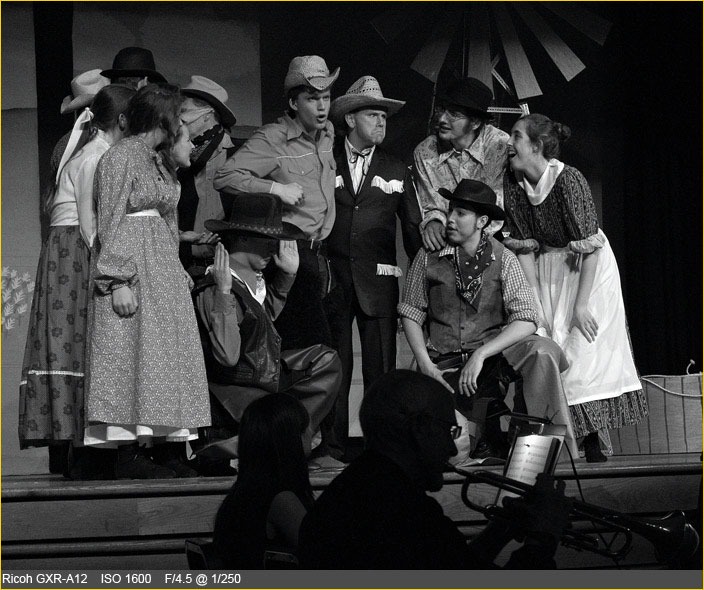
Red Sand Dunes, Sossusvlei, Namibia, 2002
Nikon D1X and 17-35mm f/2.8 AFS lens @ 17mm, f/14
This odd perspective is the result of an extreme wide angle lens held just inches from the sand and stopped down to f/14 in order to achieve enough depth-of-field. I used the ‘high-contrast’ tone setting on the D1X for this image, but I haven’t added any color saturation – the dunes really are this color. Actually, in the early morning light, the dunes gradually change from dusty rose tones through oranges and coral pinks depending on distance and the angle of light.
Love at First Sight
I had read somewhere that once you experience your first African sunset, you will forever yearn to return to mother Africa. What hooked me, however, was my first African sunrise. Standing astride the knife-edge crest of a dune on the edge of the vast sand sea of the Namib Desert in the warm, early morning light, I was transfixed by the harsh beauty of the desert. Images of these red sand dunes, the tallest in the world with some towering over one thousand feet from trough to crest, had started me dreaming of Southern Africa last summer. Four months later my wife and I were walking along a dune ridge at Sossusvlei, Namibia, filling our boots with sand. But while she trekked unencumbered by packs and gear (a wise decision, I’m sure she would say), I labored through the hot sand carrying a heavy digital camera kit: a Nikon D1X, a set of lenses, batteries and accessories and a tripod strapped to my back. I was on a quest to document what, for many people, would be the trip of a lifetime, but for us would hopefully be the first of many adventures in Africa.
The Classic Game Drive
The classic African package safari trip, be it in the parks and game preserves of Southern Africa or East Africa, typically consists of spending a couple days at each of several tented camps or bush lodges, with morning and afternoon game drives in an open vehicle and a long break at lunchtime. For the photographer this means shooting from a truck full of other folks who might not appreciate the need for remaining quiet and motionless when you’re shooting. People just don’t realize how the slightest vehicle shake can compromise the sharpness of a photograph taken with a 600mm lens. Booking a strictly photographic safari trip can help greatly in this regard. For instance, you can make sure your game drives are with only two or three other photographers who, presumably, would appreciate silence and stillness when a good photographic opportunity presents itself. Perhaps more importantly, if your truck is full of like-minded wildlife shooters, everyone will likely have the patience to linger at a stop long enough to witness something truly photo-worthy. I think I was rather lucky on our trip, which was not a photographer-only safari, since on most of our group game drives the guides politely reminded everyone to be quiet when we were close to animals and to refrain from moving around and shaking the truck so as not to disturb the photographers.
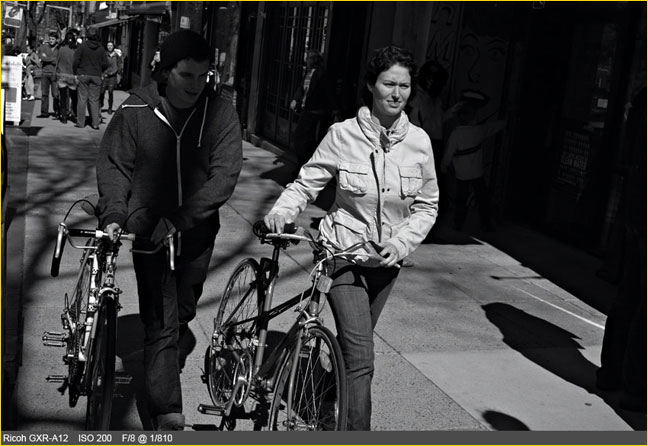
Typical Safari Vehicle, Namib Desert, Namibia, 2002
Nikon D1X and 70-200mm f/2.8 @ 200mm
The open-top Landrover is the quintessential safari vehicle. Seen here at the base of Dune 45 is a canvas canopied example from the fleet at Kulala Desert Lodge. We spent our first night in the desert at this luxurious, but expensive lodge situated in the middle of the Sossusvlei River gravel plain at the edge of the Namib sand sea.
The Self-Drive Safari
In some of Southern Africa’s best wildlife preserves, like Etosha National Park in Namibia or Kruger Park in South Africa, visitors can easily drive their own vehicles around the park, stopping periodically at waterholes to wait for animals to come drink and bathe. Some of the best photographs I captured were from the little Renault Scenic we rented in Windhoek, Namibia. An arrangement that worked great for us was for my wife to drive and for me to sit in the back seat with all my gear at the ready. This way we both had unobstructed views from either side of the car. We also discovered that we could often park the car at a waterhole at an angle such that neither of us had to sit directly in the baking sun – you tend to spend a lot of time waiting or watching from your parked vehicle on a self-drive safari.
If you do rent a car in a place like Namibia, where most roads to interesting places are unpaved, make sure you are fully insured. Either buy a policy from the rental agency or verify that your credit card company will cover the collision damage waiver (CDW). When driving on dirt or gravel roads, stay in the existing wheel ruts, don’t take curves too fast, don’t brake hard or suddenly, and heed the posted speed limits or risk sliding or rolling off the road. Though I’m a little skeptical of his numbers, the Avis representative at the Windhoek airport claimed that twenty-five percent of their rental vehicles are rolled and totaled by tourists each year. We did meet a fellow photographer and his girlfriend from the UK who did exactly that on their first day in Namibia and miraculously lived to tell about it. Their truck and most of their camping gear was destroyed when they lost control and rolled off the shoulder of a gravel road after becoming disoriented in a cloud of dust kicked up by an overtaking vehicle (actually a real rarity on Namibia’s virtually empty roads). Luckily, they both walked away without a scratch and were able to secure a new truck and gear the next day. The photographer’s Canon EOS 1V and lenses survived as well, which was fortunate since I doubt he could have so easily replaced them in Namibia.
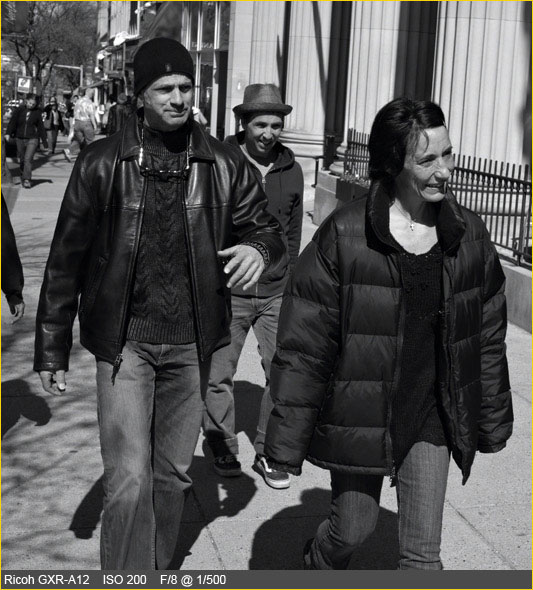
Dead Vlei Panorama, Namib Desert, Namibia, 2002
Nikon D1X and 70-200mm f/2.8 @ 70mm – Panorama stitched from five frames
This panorama was created by stitching together five overlapping frames using the free but complicated PTStitcher and PTAssembler.
It may seem like common sense never to leave expensive photo gear visible in your vehicle when it is unattended, but let me suggest that you don’t leave anything at all in the vehicle that can be seen from the outside. We did not experience any problems with theft or crime, but we heard plenty of anecdotes about petty theft and car break-ins. Southern Africa unfortunately has very high unemployment and poverty and it is often worth the risk for someone to smash a window and grab whatever is in sight inside. Locals assured us that our belongings would be relatively safe in the trunk, however, as long as everything was out of sight. Also, just about every time we parked the car in a village, town or city there were throngs of freelance parking attendants wishing to watch our car. There is some controversy among those locals who can afford vehicles whether or not to pay for the services of these young entrepeneurs, but most people we talked to suggested we do so. Most of the parking attendants actually have rather official looking red or orange jerseys with ‘Parking’ printed on them and their fees, a few Namibian Dollars or South African Rand (twenty to forty US cents), are certainly more than reasonable for a little peace of mind. Apparently vehicle break-ins have decreased significantly since the attendants started providing this service a few years ago.
Selecting Your Camera Equipment
Whether you drive yourself or ride in a safari vehicle you will still need a stable support for your camera if you want the best photographic results. Most of the time when you’re watching animals from a vehicle, they will be far enough away to require a seriously long lens, one that simply can’t be reliably hand held. There are a few options to support your camera in a vehicle. If you have enough space around you in a safari truck, you could use a tripod and a good ball head. You could even use a specialized window mount like the one available from Kirk Enterprises. Personally, I had good results using a monopod, sometimes bracing it against the the seat or side of the truck. I also brought a beanbag, the Kinesis SafariSack, which, draped over the partially rolled up window of our rental car, provided ample support for my longest lenses.
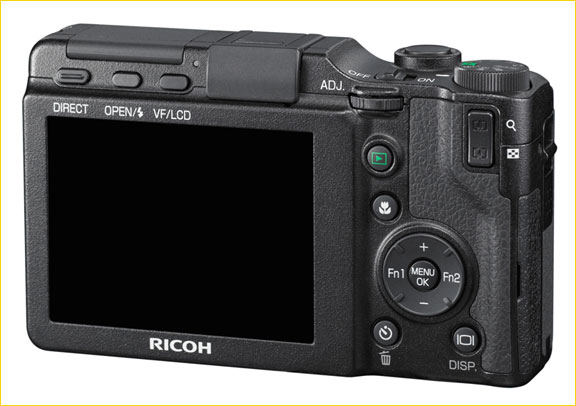
Leopard with Springbok Kill, Etosha National Park, Nambia, 2002
Nikon D1X and 70-200mm f/2.8 + 2x Teleconverter @ 400mm (EFL = 600mm)
On our last morning in Etosha National Park, just half a kilometer or so out of camp Namutoni, we saw this leopard walk across the road about forty yards in front of us. We stopped the car and watched as he climbed up into a thorn tree to feast on a fresh kill, a springbok. We had a good angle on him and beautiful light, but the distance required all the magnification I had: my 70-200mm at 200mm plus a 2x teleconverter yielding an effective focal length (EFL) of 600mm due to the D1X’s 1.5x CCD crop factor. Stabilizing this combo on a beanbag resulted in a stunning, sharp series of frames.
You should definitely bring the longest telephoto lens you can afford. If you have a full-frame 35mm film or digital camera, count on needing a 500mm lens at a minimum and perhaps a 1.4x or 2x teleconverter. My budget didn’t extend to purchasing such a beast, but fortunately I was shooting with a Nikon D1X digital SLR which has a 1.5x CCD crop factor (yes, it can be a real bonus at times). Thus, at the long end of my 70-200mm f2.8 plus 2x teleconverter I had a 600mm f5.6 lens. No, this isn’t the same as a 600mm prime lens, but it performed admirably well when I needed the extra reach, and I often needed all the reach I could get. Assuming you do have a long prime lens or zoom, consider a fast 70-200mm zoom and a nice wide angle zoom or prime to complete your kit. African landscapes can be powerfully majestic, so you might also want to bring a sturdy tripod with a good ball head, a remote shutter release and a set of graduated neutral-density filters (or bracket your tripod-stabilized scenic shots and blend the exposures digitally).
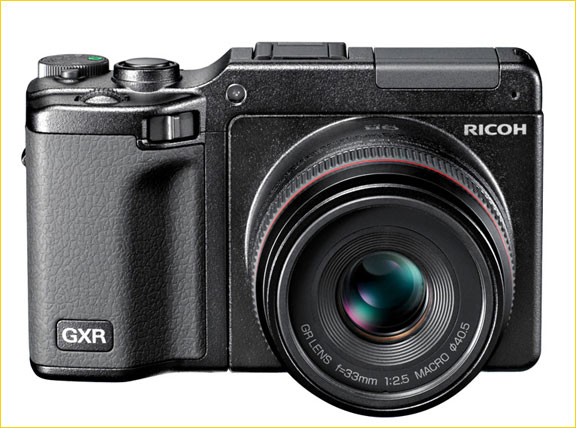
Cape Fur Seal Argument, Cape Cross, Namibia, 2002
Nikon D1X and 70-200 f/2.8 @ 200mm
You might not think of seals (they’re actually sea lions, but they’re called Cape Fur Seals) when you think of African wildlife, but there are several huge colonies of Cape Seals on Namibia’s and South Africa’s coastline. One of the largest (and smelliest), with at times hundreds of thousands of them, is at Cape Cross, Namibia. We spent a few hours one morning watching the seals and jackals on the beach here. A week later our windbreakers still smelled terrible!
Keeping Everything Powered
Because this was my first extended trip using a digital SLR I read as much as I could find online about using a digital camera in the wild. I knew I would need several camera batteries so I brought three, enough to keep me shooting all day long if necessary. I also brought a small laptop to offload images onto each night and a CD-ROM burner to make backups, though I must admit that I gave up trying to back up images daily onto CD-ROM after the first week. Two laptop batteries, chargers for the camera and computer, a small power inverter for the car, a surge-protected power strip and a couple South African power plug converters also filled my camera bag. Since we had our own car and had to drive sometimes many hours between stops, the power inverter proved very useful. On several travel legs of our trip I was able to fully charge every piece of equipment on the road using the inverter and power strip. Do be aware that, while many lodges and tented safari camps provide power receptacles in rooms and tents, they often cut the power a few hours after sundown since the power generators are noisy and can disturb guests at night. In a couple camps we didn’t have any power in our tent, but I was always able to charge batteries at the main office or lodge. It seems that lodge operators are quite accommodating in this respect.
The Dust Battle
I thought I would need to clean the CCD a few times during the trip, but none of my research prepared me for the daily battle I would have with dust. Southern Africa is a dusty place. Most of the roads in Namibia, for example, are gravel or dirt and the dust kicked up while driving on them will find its way into a seemingly sealed vehicle. The fine, powdery stuff insinuates itself into everything, including the air-conditioning system of your car. After a few days on the road, each time we cranked up the car and turned on the air, we had to hold our breath for a few seconds as little dust clouds billowed out of the vents. Our bags, our clothes and shoes, every flat surface in the car, literally everything was coated and caked with dust and dirt by the end of the trip. The latch mechanism on the rear hatchback door of our car seized up twice with road grit and was only freed by repeated blasts of water from a hose at a gas station.
Needless to say, nothing short of hermetically sealing your camera equipment in plastic bags when traveling will keep dust out, so do bring zip-top bags and cover up your gear whenever possible. If you have a digital SLR, get comfortable with cleaning the CCD and bring plenty of cleaning supplies. During our two weeks in Namibia I had to clean my camera’s CCD nearly every day with PEC-Pads and Eclipse solution. I didn’t bring an AC adapter for my D1X and instead simply inserted a freshly charged battery and exposed the CCD for cleaning by holding the shutter release in ‘Bulb’ mode.
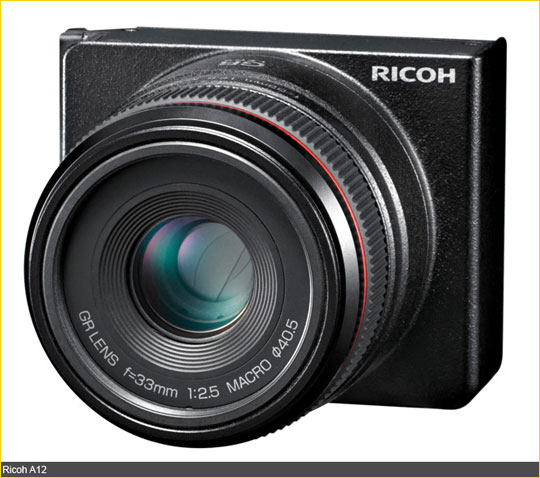
Herero Woman Holding Handmade Doll, Damaraland, Namibia, 2002
Nikon D1X and 24-85mm f/3.5-4.5 AFS @ 58mm plus diffused fill-flash
Namibia is the most sparcely populated country in Africa and one can literally drive for hours without seeing another car on the road or a single farmhouse or village. Out in the middle of nowhere, hours from any sort of town or settlement, we came across a little lean-to built of sticks and straw under which this woman was sitting with her three small children and several dozen handmade dolls she was selling. We stopped and bought one from her and I asked if she lived nearby. Smiling, she pointed further down the dirt road. Sure enough, as we drove on we passed a tiny dwelling cobbled together from pieces of wood and old tin and road signs, goats grazing on the few tufts of dry grass growing among the scrub brush.
Camera Bags and Belt Systems
Since much of your time on safari will be spent riding in and photographing from vehicles, you can probably use just about any type of camera bag or backpack to carry your photo gear. Before our trip I bought a Lowepro Stealth Reporter 650 AW to carry the bulk of my equipment. This is a photojournalist-style shoulder bag that contains a padded slot for a laptop – perfect for the digital shooter. It was important to me to be able to carry all of my camera gear, sans tripod and monopod, and all of my computer equipment in one padded, carryon-legal bag. I was able to pack the following into the Stealth Reporter 650 and carry it on the airplane with me: Nikon D1X with 17-35 f2.8 AFS attached, Sigma 70-200 f2.8 EX HSM, Nikon 24-85 f3.5-4.5 AFS, Nikon 50 f1.8 AF, Sigma 2x AF teleconverter, Nikon F100 body (backup), Nikon FM2N body (for long-exposure night photography), SB-80 Speedlite flash, Dell Latitude C400 laptop and external CD-ROM burner, charger for D1X and three D1X batteries, charger for laptop and two batteries, power inverter for car, cleaning supplies, a few rolls of film, set of filters and ND grads, assorted camera and computer accessories. My tripod and monopod went with the checked luggage.
Because we planned to walk and hike in some locations, like the dunes in the Namib Desert, I brought a Kinesis belt system as well. At each stop on our trip I would load the belt pouches with the camera, memory cards and whatever complement of lenses and filters I would need for an outing. Depending on the situation, I also brought the tripod or monopod. Incidentally, my monopod proved to be a decent walking staff as well. Though I have often used a photo backpack when traveling, the combination of carryall shoulder bag and mobile belt system worked quite well on this trip. The Kinesis belt distributes the weight of your gear on your hips and makes for easier hiking than a heavy backpack. In extremely hot climates like Southern Africa, the belt is cooler since you don’t have an insulating pack flush against your back.
Wildlife
It seems everyone who goes on safari in Africa wants to see the so-called ‘Big Five’ animals: lion, leopard, elephant, rhino and buffalo. The first-timer will quickly realize, however, that there are many more animals to see and photograph beyond the familiar zebras, giraffes and gazelles. There are wildebeest, springboks, gemsboks, kudu, bat-eared foxes, mongoose, warthogs, hyenas, and on and on. And don’t forget the smaller creatures like dassies (hyrax), lizards, snakes, beetles and an amazing assortment of birds. In short, bring a good wildlife identification book and be prepared to fill your memory cards quickly!
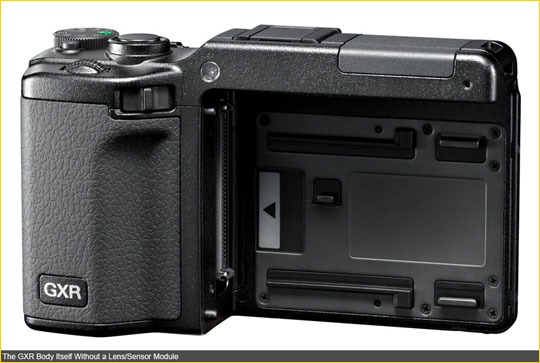
Red-billed Hornbill, Okonjima, Namibia, 2002
Nikon D1X and 70-200mm f/2.8 @ 200mm
Several species of hornbill can be found in Namibia and it seems they particularly like roosting in knarled, dead acacia trees. I stepped out of our hut at Okonjima one morning and there in the tree, not thirty feet away from me, sat this one. He even waited patiently for me to carefully set up my tripod and camera to photograph him.
The Bottom Line on a Digital Safari
Traveling to Africa with a digital camera kit is not without problems, but there are simply too many benefits to ignore. The ability to instantly review shots and adjust or correct exposure problems in the field cannot be underestimated. Considering the number of frames I shot on our trip, had I shot them all on my favorite transparency films, Fuji Velvia and Provia 100F, I would have spent enough on film and processing to buy a Nikon D100 or Canon D60. And I also have to consider all the time saved by not having to scan all those slides for web publication and printing – I have a digital product straight from the camera. Frankly, I wouldn’t consider anything other than a digital camera for my next African adventure.
Photographs and Text © 2003 Scott L. Robertson
Scott Robertson is an Atlanta-based software and multimedia designer and an avid travel, nature and landscape photographer. More of his work can be seen atwww.slrobertson.com.
You May Also Enjoy...
Digital Blending
This subject is featured in Issue #6 ofThe Luminous Landscape Video Journal. The Problem Being SolvedIn nature when doing landscape work that includes sky, especially
